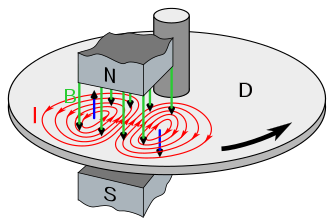Table of Contents
The term “Simple Strike Sequence” may sound intriguing, especially if you’re new to martial arts, self-defense, or even certain sports. The principle behind it is to provide a series of basic, effective moves that can be executed rapidly in succession to fend off an aggressor or to gain a strategic advantage in a physical contest.
What is a Simple Strike Sequence?
At its core, a Simple Strike Sequence is a predetermined series of moves designed to be performed quickly and effectively. These moves are usually basic, making them easy to remember, especially under pressure.
Importance of a Simple Strike Sequence:
- Muscle Memory: Repetition of a Simple Strike Sequence can engrain these movements into your muscle memory. This ensures that when faced with a real-life situation, your body can automatically react without overthinking.
- Speed & Efficiency: Simplicity is key. With basic moves, you can act quickly without getting tangled in complex maneuvers, which can be crucial in high-pressure situations.
- Versatility: A well-designed sequence can be adapted and modified depending on the situation or the opponent’s reactions.

Basic Components of a Simple Strike Sequence:
- Opening Strike: This is usually a quick move designed to startle, distract, or create an opening against an opponent. Common opening strikes include jabs in boxing or a front snap kick in Taekwondo.
- Main Attack: Following the opening move, the main attack is intended to incapacitate or significantly weaken the adversary. Examples include a cross punch or a sidekick.
- Follow-through or Finisher: This is a move to ensure you maintain the advantage, either by disabling the opponent or putting yourself in a safer position. It could be a simple maneuver to create distance or a more aggressive technique to end the confrontation.
Developing Your Own Simple Strike Sequence:
- Understand Your Strengths: Focus on moves that you are already proficient in. This will boost confidence and reduce hesitancy when executing the sequence.
- Keep it Short: Too many moves can lead to overthinking. Ideally, stick to three to five techniques.
- Practice: Drill the sequence repeatedly until it becomes second nature. Train both slowly to ensure proper form and faster to mimic real-world scenarios.
- Adaptability: Always be prepared to modify your sequence based on the situation. For instance, if an opponent blocks or evades a strike, have a backup move ready.
- Seek Feedback: If possible, spar with partners or consult with instructors to get feedback on your sequence’s effectiveness.
A Simple Strike Sequence is an essential tool for anyone looking to enhance their self-defense capabilities or improve their martial arts prowess. By focusing on basic, effective moves and regularly practicing them, you can ensure that you’re always ready to protect yourself or gain an edge in a physical contest. Always remember, the key is not complexity, but efficiency and adaptability.
Simple Strike Sequence in Golf
Golf is often regarded as a game of precision and consistency. The allure of the game is not just in the long drives but in the simplicity of hitting the ball effectively and consistently. One of the core fundamentals to achieving this is understanding and mastering a simple strike sequence.

1. The Set-Up: Foundation for Success
Posture: Begin with a neutral spine. Bend from the hips, not the waist. Your knees should be slightly flexed.
Grip: Hold the club with your fingers, not the palms. A neutral grip where you can see 2 or 3 knuckles on the lead hand is often recommended.
Alignment: Ensure your feet, hips, and shoulders are parallel to your target line.
2. The Takeaway: Start on the Right Path
Engage the big muscles of your shoulders and torso to initiate the backswing, allowing the club to move back smoothly. Think of your arms and the club as being dragged by this rotation, rather than actively lifting the club with your hands.
3. The Backswing: Store Power
Rotate your torso and allow your weight to shift slightly to the inside of your back foot. This creates a coil, storing energy to be released during the downswing.
4. Transition: The Key to Power and Precision
This is the moment between the end of the backswing and the start of the downswing. Focus on a smooth transition, initiating the downswing with the lower body. The hips should start to turn, followed by the torso, arms, and finally the club.
5. The Downswing: Release the Energy
As you uncoil, your weight should transfer to your lead foot. Ensure the wrists stay hinged as long as possible, releasing them only when the club is nearing the ball. This late release ensures maximum power at the point of impact.
6. Impact: The Moment of Truth
Your head should still be behind the ball, with your lead wrist flat and your trail wrist slightly bent. This ensures a good strike. Most of your weight should now be on your lead foot, and your hips should be pointing towards the target.
7. Follow-Through: Finish Strong
Continue rotating your body until your chest faces the target. Your club should finish over your lead shoulder, and your weight should be fully transferred onto your lead foot. A balanced finish position indicates a well-executed swing.
Tips for a Consistent Strike Sequence:
- Practice Slowly: Work on each segment of the sequence separately. Once you’re comfortable with each part, combine them at a slower pace, focusing on fluidity and balance.
- Visualize: Before each shot, visualize the perfect strike. This mental rehearsal can significantly boost your actual performance.
- Routine: Develop a consistent pre-shot routine. This helps not just with alignment and setup but also with mental focus.
- Seek Feedback: Use technology or ask a friend to record your swing. Analyzing your sequence can provide insights into areas that need improvement.
- Get Professional Help: Consider hiring a golf instructor or attending clinics to refine your technique. A professional eye can often catch subtle issues that might be affecting your strike sequence.
Mastering the simple strike sequence in golf can lead to significant improvements in your game. It offers a structured approach, breaking down the swing into manageable parts. By focusing on the fundamentals and practicing consistently, golfers of all levels can achieve a powerful and effective swing. Remember, in golf, as in life, sometimes the simplest approach is the most effective.
Also, read about Partially Oriented Yarn































